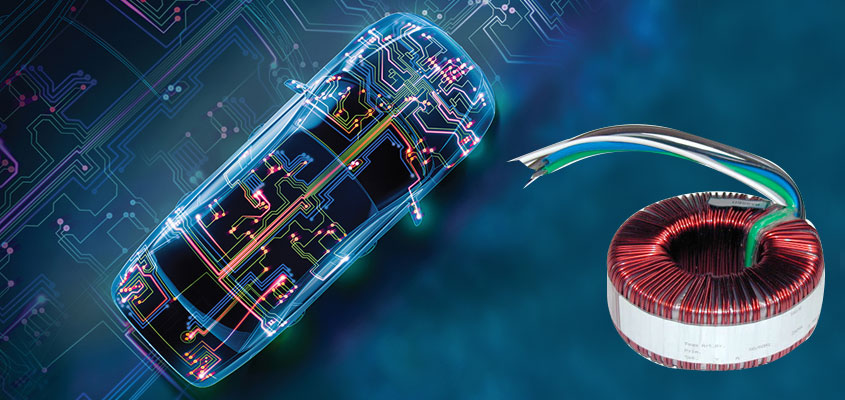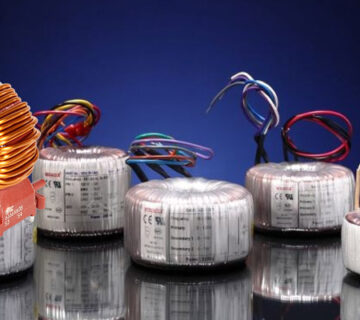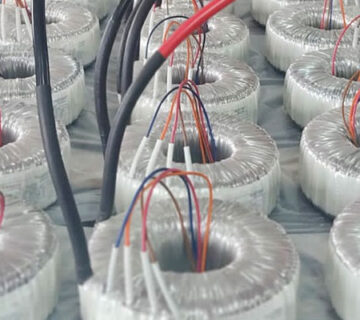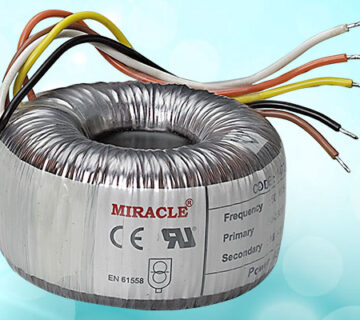Toroidal transformers are used in any electronic application to step up or down a voltage or to simply isolate electronic equipment from a voltage source. Different applications require different types of transformers, and thus you must be very careful while choosing such a transformer for your requirement. You must be sure of choosing the perfect kind of transformer to fulfill your needs. Miracle Electronics is a leading name in manufacturing the finest quality Toroidal transformer in India, which is more efficient than any other transformer of a similar power level. Different types of applications require different materials and industry workmanship standards; and this is what Miracle Electronics is efficient at. Specify the type of application you require and you will be provided the best product depending on whether you need low noise interference, high regulation, reduced magnetic field, etc.
What different applications are Toroidal transformers used in?
Toroidal transformers are used in a variety of applications, the most common ones being –
- Medical isolation equipment
- Security systems
- Automotive electronics
- Power distribution equipment
- Industrial control equipment
- Professional and domestic audio and audio-visual equipment
- Telecommunication systems
- LED lighting (residential, commercial, street, airport runway)
- Renewable energy inverter systems
How do Toroidal transformers work?
Alternating current (AC) electricity changes directions in a sine wave pattern. Standard AC voltage begins at zero volts and rises to its positive peak, and then falls to zero volts again in the first half of the cycle. It then rises to its peak in the opposite direction and falls back to zero volts again. This is done 60 times a second, which creates 60 cycles or 60 Hertz.
Found in the simplest of tiny battery chargers as well as massive power generating stations, the Toroidal transformer changes this AC voltage from one level to another. The input of the transformer connects to the primary coil, which is a coil of wire wrapped around the donut-shaped ferromagnetic core of the transformer. The electricity that passes through this coil builds a positive magnetic field that rises up to its peak, which collapses when the voltage decreases to zero volts (in the first half of the cycle). When the electricity passes through the coil in the opposite direction, a negative magnetic field is built up, which also collapses when the voltage returns to zero again.
While these magnetic fields build and collapse, they pass through the secondary coil of the transformer, which is a second coil of wire wrapped around the same core as the primary. The magnetic fields when pass through the secondary coil, produce the output voltage. The amount of voltage produced depends on the number of coils in the secondary as compared to the primary. If the ratio is 2:1, the voltage will be halved, while if the ratio is 1:2, the voltage will be doubled.
The core of the transformer that consists of a tightly wrapped strip of steel improves the building and contraction of the magnetic fields and helps them to induce the voltage into the secondary coil. This makes the transformer more efficient because more voltage gets induced from the primary coil to the secondary.




